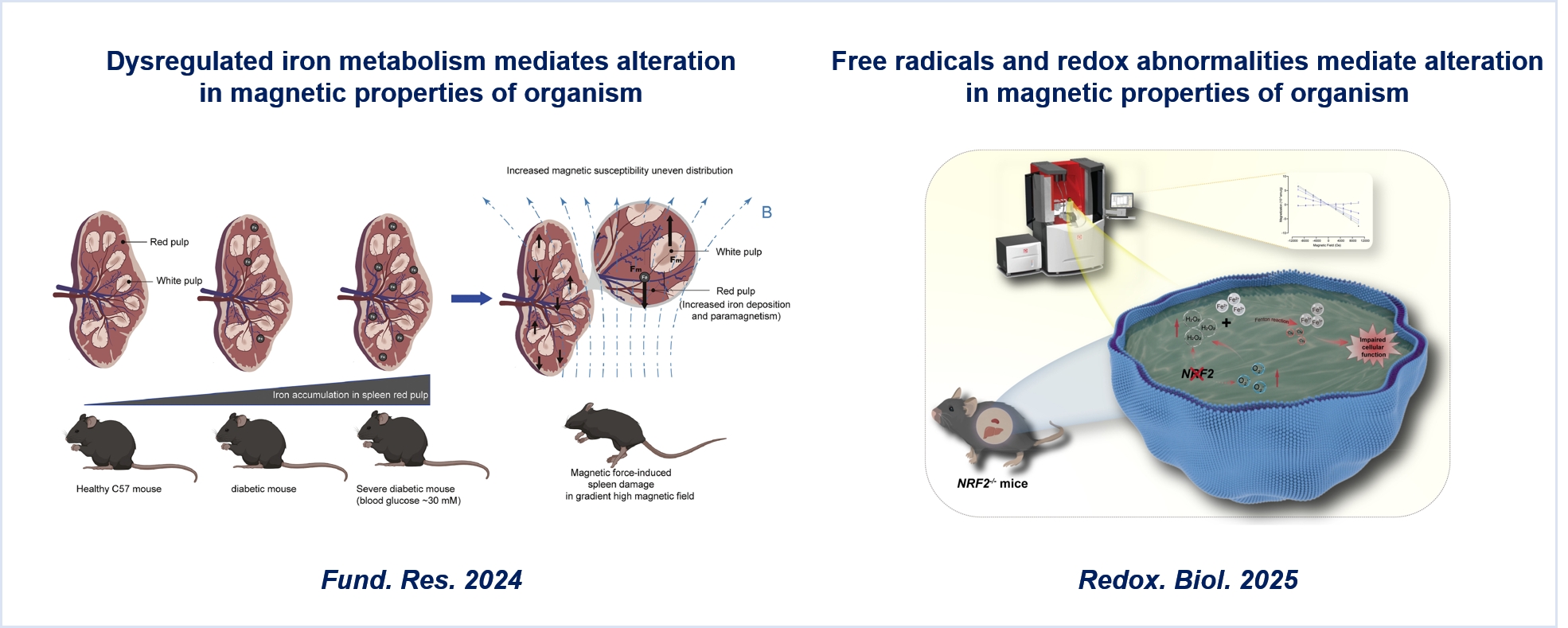
A research team led by Prof. ZHANG Xin from the Hefei Institutes of Physical Science of the Chinese Academy of Sciences has revealed how magnetic properties in mice vary under different physiological and pathological conditions.
Their study, published in Fundamental Research and Redox Biology, explores the fascinating connection between magnetism and biology.
Although scientists have made significant strides in understanding how magnetic fields affect living organisms, individual variations in these responses have remained poorly understood.
In this study, the team analyzed biological systems from a magnetic perspective. They discovered that factors like abnormal iron metabolism, imbalances in antioxidants, and changes in free radical levels influence the magnetism of living tissues and how they respond to externally applied magnetic fields.
The team also examined mice with a knocked out of the NRF2 gene, which is responsible for regulating redox balance. In these NRF2 knockout mice, free radical levels were higher, and the magnetic properties of their liver and spleen changed significantly. These changes are likely linkd to high iron content in these organs and the chemical reactions that alter their dramatic magnetic properties.
These findings provide a deeper understanding of how iron levels and redox balance within the body influence its magnetic properties, potentially offering a new way to track disease progression.

Iron metabolism, free radical metabolism, and redox imbalance lead to changes in the magnetic properties of tissue in mice. (Image by FENG Chuanlin)

86-10-68597521 (day)
86-10-68597289 (night)

52 Sanlihe Rd., Xicheng District,
Beijing, China (100864)

